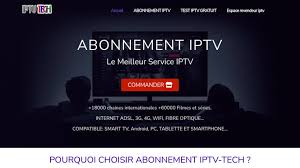In the rapidly evolving world of digital media, Internet Protocol Television (iptv abonnement) stands out as a revolutionary service that transforms the way we consume television content. IPTV delivers television content through internet protocols rather than traditional satellite or cable formats. This article explores the core aspects of IPTV services, including their functionality, benefits, types, and future prospects.
What is IPTV?
IPTV, or Internet Protocol Television, is a system where digital television service is delivered to subscribers through internet protocol technology over a broadband or internet connection. Unlike traditional television formats, which rely on satellite or cable signals, IPTV uses the internet to stream content directly to the viewer’s device.
How Does IPTV Work?
IPTV operates through a set of technical steps that ensure seamless delivery of television content:
- Content Acquisition: IPTV providers acquire content from various sources, including live TV channels, on-demand videos, and other multimedia sources.
- Encoding and Compression: The content is then encoded and compressed to ensure efficient transmission over the internet. This step involves converting the content into digital format and reducing its size without compromising quality.
- Content Delivery Network (CDN): The compressed content is sent to a CDN, which is a network of servers distributed globally to ensure efficient content delivery. CDNs help in reducing latency and buffering issues.
- Streaming to End Users: Subscribers can access the content through a set-top box or an IPTV app installed on their smart TVs, computers, smartphones, or tablets. The content is streamed in real-time, allowing users to watch live TV or on-demand videos.
Types of IPTV Services
IPTV services can be broadly categorized into three types:
- Live Television: This service allows users to watch live TV broadcasts over the internet. It includes real-time streaming of channels, similar to traditional cable or satellite TV services.
- Time-Shifted TV: Time-shifted TV services allow users to watch previously aired content. It includes features like catch-up TV, where viewers can watch shows that were aired hours or days ago, and start-over TV, which lets viewers restart a live show from the beginning.
- Video on Demand (VOD): VOD services provide a library of videos that users can watch at any time. This includes movies, TV shows, documentaries, and other content that users can select and view at their convenience.
Advantages of IPTV
IPTV offers several benefits over traditional television formats:
- Flexibility and Convenience: IPTV allows users to watch their favorite content on multiple devices, including smart TVs, smartphones, tablets, and computers. This flexibility ensures that viewers can enjoy content anytime and anywhere.
- Wide Range of Content: With IPTV, users have access to a vast library of content, including live TV channels, on-demand videos, and exclusive content. This extensive range ensures there is something for everyone.
- Interactive Features: IPTV services often include interactive features like pause, rewind, and fast forward, providing a more personalized viewing experience. Additionally, users can access supplementary content such as program guides, subtitles, and multiple language options.
- Cost-Effective: IPTV services are typically more cost-effective than traditional cable or satellite TV subscriptions. Many providers offer customizable packages, allowing users to pay for only the channels and content they want.
Challenges and Future Prospects
While IPTV offers numerous advantages, it also faces certain challenges:
- Internet Dependency: IPTV relies heavily on a stable and high-speed internet connection. Poor internet quality can result in buffering, lag, and interruptions in streaming.
- Content Licensing: Acquiring content licenses can be complex and expensive for IPTV providers, especially when dealing with international content.
- Technical Issues: Technical challenges such as latency, bandwidth limitations, and compatibility with various devices can impact the quality of the IPTV service.
Despite these challenges, the future of IPTV looks promising. With advancements in internet infrastructure, increased adoption of smart devices, and growing consumer demand for flexible and personalized viewing experiences, IPTV is set to become a dominant force in the television industry.
Conclusion
IPTV represents the future of television, offering a flexible, cost-effective, and interactive way to consume content. As technology continues to evolve, IPTV services are likely to become even more sophisticated, providing viewers with an unparalleled entertainment experience. Whether it’s live TV, time-shifted content, or on-demand videos, IPTV is reshaping the way we watch television, making it an exciting time for both providers and consumers in the digital media landscape.


